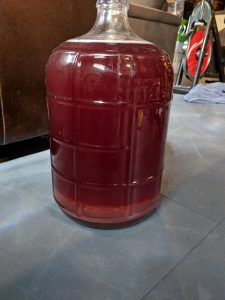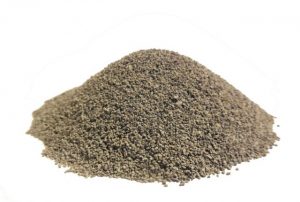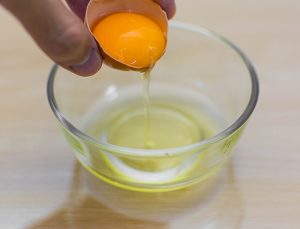One of the most common questions we hear from new winemakers is how to clarify wine. Getting that crystal clear wine is something many home vintners really strive for. There are really many different techniques you can take that will lead you to clear wine. Some are more aggressive and expensive than others. Some of them are more of the traditional type of additives that have been working for years. While others are newer chemical compounds that will get the job done fast. There are a couple of different reasons for cloudy wine. The main cause is particle haze. Meaning there are small particles still floating around in the wine. The other primary cause is pectic haze or the pectin from the fruit being suspended in the wine mixture. Let’s talk about several ways to clarify wine.
If you’re new to winemaking then you’ll want to take a look at our post on how to make homemade wine. Then save this article for when you are getting close to bottling time.
Table of Contents
How to Clarify Wine Using Gravity

Let’s talk about the old tried and true method: gravity. For the longest time winemakers would simply let their wines site for an extended period of time and let gravity do its job and collect the particles at the bottom of the fermentation vessel. Since the particles are heavier than the liquid that they are suspended in they will eventually sink to the bottom if given enough time. When we talk about how to clarify a wine this is always the first step. Just give it more time is something you probably don’t want to hear but it’s pretty common. Letting the sediment settle and then siphoning off the liquid is the primary way to clarify a wine. Aging and racking should always be your first step in clarifying your wine. If you’re in more of a hurry there are some other options out there.
Clarify a Wine Using Pectic Enzyme
Pectin haze is a common cause of cloudy wine. This is especially true for fruit wines. Peach wine, for example, is notorious for having trouble with pectin haze. The pectin from the fruit becomes suspended in the liquid mixture causing a cloudy appearance. The addition of a pectic enzyme additive prior to fermentation will help to clear wines with pectin haze. The pectic enzyme will assist in breaking down the fruit that you are trying to extract your juice and flavor from. Because the pectin is still intact after you crush the fruit the addition of the enzyme will break down the structure of the pectin. This will prevent the pectin from forming a haze in the finished wine. The pectic enzyme also aids in filtering as it keeps your filter from being plugged with pectin. For the most part it’s a good idea to add pectic enzyme to all of your wines to help the wine clarify and clear.
- Pectic Enzyme - 1 lb
- Add to must to break down pulp and aid in the extraction of tannin
- Can also abate pectin haze in wines and Ci
Prices pulled from the Amazon Product Advertising API on:
Product prices and availability are accurate as of the date/time indicated and are subject to change. Any price and availability information displayed on [relevant Amazon Site(s), as applicable] at the time of purchase will apply to the purchase of this product.
Clarify a Wine Using Bentonite

Bentonite is a type of clay mineral that has been used as a clarifying agent in wines for some time now. It comes from a form of volcanic ash. of volcanic ash. It is an absorbent material that is able to bond with the floating particles that cause cloudiness in wine. It can be added to the wine at any phase and is typically introduced as a slurry mixture of water and bentonite. Some people think that adding bentonite during fermentation allows the particles of bentonite to be pushed up through the wine by the co2 and attached to the other particles and drag them to the bottom. Other than that it can also be added during aging and slowly help to draw the floating particles to the bottom of the carboy. You usually only need to add 1-2 tablespoons of bentonite to some water to make a slurry and then add it to your wine. Add the mixture to your wine and stir vigorously, then just wait and let it do its job. There is really little downside to adding bentonite to your wine and it’s relatively inexpensive and natural.
- North Mountain Supply Food Grade Bentonite Clay - 4 Ounce Jar
- Packaged in a plastic jar with a tamper evident air tight seal to ensure quality and freshness!
- Bentonite is a Gray, clay granule that is used in wines as a clarifier - Add prior to primary fermentation to clear pectic and protein haze
- Helps to reduce the occurrence of certain off-flavors, as well as reduce the wines ability to oxidize
- Also used in DIY cosmetics and beauty produ
Prices pulled from the Amazon Product Advertising API on:
Product prices and availability are accurate as of the date/time indicated and are subject to change. Any price and availability information displayed on [relevant Amazon Site(s), as applicable] at the time of purchase will apply to the purchase of this product.
Clarifying Wine Using Egg Whites

Some of you may have heard about this while others will think this is a bit strange but adding egg whites to wine is another way to help clarify it. This method is one of the oldest techniques to clear wine. Egg whites are made up of albumin and globulin which are positively charged. This causes the negatively charged particles in the wine to be attracted to the egg whites. The egg white forms a bond to the particles and tannins and they attach together. This will make the wine look cloudier at first but eventually, the particles will sink to the bottom of the wine. This technique is more suitable for red wines as the egg whites are most attracted to the tannins. This doesn’t work out as well for white wines. One egg white should be plenty for a 5-6 gallon carboy. Add the egg white and stir then let it sit for about 2 weeks before racking.
Clarifying a Wine Using Sparkolloid
One of the things that come to mind when you think about how to clarify wine is some type of chemical additive. One of the newer chemical clarifying agents is known as Sparkolloid. This fining agent is actually best used after bentonite. While bentonite will take care of many of the larger particles, Sparkolloid will take care of the rest. It’s really good at fining the wine. Sparkolloid can technically be added any time after fermentation stops but usually, it’s after bentonite has had time to work. Sparkolloid powder is able to take out the finer particles that bentonite can miss by neutralizing their electrical charges and allowing them to drop out of the wine. On its own, Sparkolloid is not that good at attaching to larger particles so you will want to use it in conjunction with bentonite.
- Wine clarifier
- Easy o follow instructions
- Simple packag
Prices pulled from the Amazon Product Advertising API on:
Product prices and availability are accurate as of the date/time indicated and are subject to change. Any price and availability information displayed on [relevant Amazon Site(s), as applicable] at the time of purchase will apply to the purchase of this product.
Clarifying a Wine with Super-Kleer
Super-Kleer is a newer additive on the market that can get your wine looking super clear extremely quickly. If you’ve tried everything else and nothing seems to be getting you the level of clarity that you want then you need to try super clear. Its an excellent all-purpose fining for beer or wine. Super-Kleer is made up of kieselsol and chitosan. You will use this product after fermentation is don’t. You will stir in one part of the bag. Then wait 24 hours and add the second part of the bag to 2oz of warm water. Add the mixture and stir. You will have very clear wine withing about 48 hours usually. You can let the wine sit for about two weeks to get the fullest effect. Try Super-Kleer today.
- All natural, all-purpose clarifier for beer, wine or cider
- Composed of kieselsol and chitosan
- Removes suspended proteins and solids
- One package treats 5 to 6 US gallons
- 10-P
Prices pulled from the Amazon Product Advertising API on:
Product prices and availability are accurate as of the date/time indicated and are subject to change. Any price and availability information displayed on [relevant Amazon Site(s), as applicable] at the time of purchase will apply to the purchase of this product.
Conclusion
We’ve given you several different types of fining agents to help you clarify your wine. You will probably end up using one or many of these agents in combination to get the best results. Try them out and see which ones work the best for you wine.
| Image | Title | Price | Prime | Buy |
|---|---|---|---|---|
 Top
Top | Still Spirits Turbo Clear (Pack of 5) Clearing Agent | Prime | Buy Now | |
 Top
Top | Liquor Quik Super-Kleer KC 2-Part Finings - Pack of 5 | Prime | Buy Now | |
 Top
Top | LQ Kieselsol - 1 LITER | Prime | Buy Now | |
 Top
Top | Home Brew Ohio 6382a Pectic Enzyme (Powder) - 1 lb. | PrimeEligible | Buy Now | |
 Top
Top | Home Brew Ohio Bentonite Powder - 1 lb. | Prime | Buy Now | |
 Top
Top | LD Carlson 6357A Sparkolloid Powder 1 oz. | PrimeEligible | Buy Now | |
 Top
Top | Kieselsol Wine Clarifier, 12.5mL | Prime | Buy Now | |
 | Chitosan 75 ML | Prime | Buy Now |




